As bad as insects can be in any backyard garden, animals are much worse and are capable of ruining entire crops of plants. They can easily and quickly consume all the leaves on your plants leaving you with nothing but a bunch of empty stems. Some animals will only go after the fruit of your labor rather than chewing on the leaves. I will discuss some of the most common pests that you will encounter and how you can easily control them with some simple solutions.
Contents
Deer
These animals are always eating and usually will eat any type of vegetation they come across. They are found mostly in rural areas, but can sometimes be seen in suburban communities from time to time. Corn is one crop that they love to eat and can devour a small area full of them.
They are more of a nuisance to commercial farms because they are normally near areas where they feed. Also when corn is tall enough it is difficult to see deer in larger farms. If you see them in your backyard they will most likely stick out like a sore thumb.
Protecting Your Vegetables from Deer
Using Fences
Fences are probably the best way that you can protect your garden from veggie eating deer. Electric fencing is used in larger farms, but for the home gardener it may not be worth the time and money. A simple chain link fence will work wonders against these animals. It would have to be quite tall because deer are capable of jumping really high especially to get food.
I would recommend a fence that is at least 8’ tall around plants that they will eat. You can even add another fence not as high to the inside of your garden which will confuse deer and deter them from trying to jump the 8’ fence. Solid walls that are made of stone or wood also make a good barrier that these pests will not be able to jump over.
Home Made Repellents
Another way to get rid of deer is to use organic repellents. There are several different things that you can do from products in your home that might prevent your plants from being eaten. Bars of soap can either be hung by trees or nailed on 4’ stakes that encircle the perimeter of your yard. Place them at least 15’ apart to ensure a good barrier.
As strange as it sounds some gardeners have actually used human hair to protect their harvest. This is something that you can try if you can get your hands on plenty of human hair. Placing them in bags made of cheesecloth in three feet intervals may stop deer from coming near your garden.
An egg water mixture is another solution that you can use. Mixing five eggs with five quarts of water will give you enough to spray your trees that are being attacked by deer. It is best to use for a ¼ acre of land mainly for trees. Several applications may be needed especially after a good rain.
Commercial Repellents
There are also many types of repellents that you can purchase in most centers in your community. Make certain that you only use ones that are certified organic or that are using only organic materials in the solution. I find that experimenting with all these methods is the best way to ensure a deer free garden. Feel free to make up your own solutions too, because if you find something that works why mess with a good thing.
Ground Squirrels and chipmunks going after Fruit
These two enemies are closely related to normal squirrels that you see in most areas of the country. They both like to eat fruits, bulbs, seeds, nuts, roots, and other similar foods. I would recommend just covering foods that they eat with some simple metal screens or strong cloth so that they cannot get at your plants.
You can even trap them with metal traps that you can get at most small garden outlets and release them away from your yard at least a couple of miles. My father used to put red pepper around our bird feeders so that the squirrels would not eat them and it would burn their eyes if they got near it. I would only try this if they are a real problem.
Tiny Mice and Voles
The animals may be small but can cause some serious damage especially for orchards. They like to eat green vegetation, but they especially like to eat bark off of trees. If you plan on growing apple trees in your yard you need to be on the lookout for these pests.
Set up some snap traps around your trees making sure that you put good bait inside of these traps. Peanut butter is the number one choice because these animals are attracted to this food and will most like try to get at it. Repellents used for deer can also be a good solution for these pests as well.
Moles
Moles are one of those animals that are good and yet they can be a real pain in the butt. They are attracted to grubs, beetles, and other insects while at the same time they do devour earthworms. Earthworms are an organic gardener’s best friend and when you have moles that are reducing their population it is time to solve your mole problem.
How to Get Rid of Moles
You can use specially designed traps that are capable of holding these animals until you release them back in the wild. You can even use harpoon traps that will eliminate them directly on contact. It is up to you to decide whether or not these solutions are practical for your yard.
One of the best ways to prevent moles from entering your yard or garden is to dig a trench 6” wide and about 2’ deep. Fill the trench with a hard material such as stones, rocks, shells, or anything else that will not decompose quickly. Now when the mole tries to dig a tunnel into your yard it will run right into the trench preventing them from ever harming your plants.
Gophers
These animals are similar to moles and love digging tunnels and eat bulbs, leaves, roots, seeds, and even some plants. They usually leave large mounds of dirt all around and is a good way to determine if they are living in your area.
Prevent them from entering your garden by placing a chicken wire fence two feet underground and two feet above the surface. This will keep them out and prevent them from digging holes throughout the area. Some have used oleander plants around trees that may also repel these creatures.
Rabbits and Their Sprinting Speed
Rabbits are also another nuisance for anyone who begins growing their own garden. They are quick and are able to avoid being captured without using a baited trap. They love eating leaves of beans, carrots, peas, and many other vegetables. They are capable of crouching down real low to avoid detection and can be tough to spot especially in high growing plants.
Keeping Rabbits out of Your Garden
You can use similar repellents that are used for various other pests, but in my opinion there is only one way to make sure they stay out of your yard. A durable chicken wire fence is the best defense in keeping your plants safe from being eaten. I would recommend using at least a three foot tall fence and place at least one foot into the ground.
They are able to create small ditches and if the fence is not placed in the ground far enough they will be able to easily squeeze underneath and wreck havoc. Polypropylene plastic does not work and they will chew right threw the plastic very easily and quickly. You can also use baited traps made for rabbits as a last resort.
Wild Raccoons
These animals can be a problem with their feasting on corn stalks. You can see damage in the daytime of broken corn stalks, kernels scattered all over the ground, and chewed on cob ends. You will find that they will not go after corn if you happen to put plants that have prickly foliage. The best would be zucchini and pumpkin plants. You can even light the garden at night which will keep them away.
Woodchucks and Groundhogs
These are the worst pests that any garden can have and they are capable of just destroying an entire harvest without breaking a sweat. They are large woodland creatures that will come out in the cooler times during the day. They will not come out when it is very hot because their fur coats will bake them alive if they stay out too long. Early mornings and evenings are when they are most active.
How You Know you have Groundhogs?
Groundhogs don’t care about your garden and it is very easy to know if you have a woodchuck in your midst. One day you will have bright flourishing leaves and then the next it will look like a lawn mower ran them over. They will eat an entire row of beans, squash, carrots, tomato fruits, peppers, cucumbers, all melons, and even sunflower leaves. They can eat many flowers and weeds as well and will do anything to get into your garden.
Finding a Groundhogs Home
Since groundhogs live in tunnels the best thing to do is to search for the entrance to their home. You will most likely find them around large tree roots and areas that have piles of wood where they can easily use as a shelter. If you live in the Northeast or Canada and in areas with trees most likely you will see them roaming around.
Getting Rid of Groundhogs
Fences don’t do the job because they are excellent diggers and can easily create a small ditch where they can go in and out of your garden. If you plan on putting up a fence to keep these creatures out it must be placed deep underground and high enough that they won’t be able to climb them as well. Three to four feet is the minimum that you should place your fence into the ground.
They have very sharp teeth and claws and if you put up a fence make sure it is able to withstand the weather and is strong enough that nothing will be able to chew or claw through it. I would go with a steel rather than any other material.
Using Large Traps for These Pests
Traps are another way to get rid of these animals. The problem with this is that more of them will eventually find your garden and just destroy your harvest. It is better to put up a physical barrier that they cannot get through. Make sure you get a big enough trap because some of them can be quite huge especially if they have been eating much foliage.
Place a head of lettuce or some old kale or any type of leaves that they eat and place it in the middle. When the groundhog steps in the middle the doors on each side close shut and lock into place. To make sure that the doors close you can place a couple of heave rocks on them which when triggered will shut the doors quickly and your groundhog will be secure in the cage.
Garlic Sprays
I have used a spray on my plants before as a test and when they took one smell of this spray they wouldn’t eat the leaves. This could be a small cost effective way of avoiding groundhog problems. You can get them at garden stores and will be made out of some sort of garlic solution. Groundhogs hate garlic. You can create a border of garlic bulbs that might keep them away as well.
What to do if They Become a Serious Problem
If groundhogs are a serious problem in your area you might want to think about different measures that you can take. Once you find their home you can flood their hole with water which will fill up gradually and they will need to leave in order to escape the flooding. You can either capture them or remove them from your yard permanently.
You can also utilize smoke bombs that are sold commercially in many hardware stores that can be very effective if used correctly. You will want to wait and see a groundhog go into the hole before you use either of these methods otherwise you might be wasting your time. Many groundhogs will build multiple holes so that they can have an easy escape route just in case.
Other Annoying Animals That You May Find in Your Yard
Armadillos
For those that live in the south these animals can be nuisance when their normal diet is not present. They normally feast on worms, insects, slugs, and sometimes small eggs. When these things are not present they might end up in your garden feeding on foods. A protective fence should easily keep these animals at bay.
Prairie Dogs
Western United States residents have to deal with these animals and can be easily controlled if you know what to do. You can use the same solution as ground squirrels and chipmunks.
Skunks
Everyone knows if there is a skunk in their yard because in the summertime you will usually smell them from a mile away. They are attracted to grubs, worms, insects, slugs, and other bugs that might be living in the ground.
They can be more of a nuisance in the garden because they will dig up many plants to find their food. If you use blood meal in your garden they will be able to smell this organic fertilizer and will think that there are bugs in the soil that they can eat. Naturally they will try to dig up the soil ruining your plants. Chicken wire fence should suffice to keeping them out.
Pesky Squirrels
Another annoying animal that is out and about for most of the year are tree climbing squirrels. Fences don’t do anything for squirrels except give them another way from them being captured. They can climb trees, fences, walls, and anything else you place in their way.
They eat mostly seeds, nuts, small berries, fruits, and sunflower seeds. If you are like me and grow sunflowers in your yard when they begin going to see you will see squirrels going after them like a bee to honey. They can eat the entire flower if they have plenty of time. Try covering them with a thick cloth to protect your flowers or repellents that will keep them away. Deer repellents should work just as well for squirrels.
Birds
Birds are a hassle and with so many of them around they can be the biggest nuisance of them all. They go after berries including strawberries, blueberries, raspberries, mulberries, and many more. They are also a pain when planting seeds in the garden because they will dig them up and eat them as well.
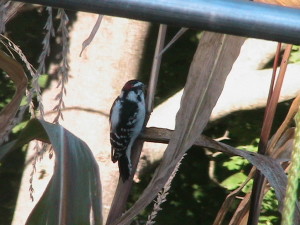
Downy woodpecker checking dead cornstalks for food (grubs, caterpillars, bugs, etc.). These are beneficial birds that you want in your yard.
The only good thing about birds is that they also like to eat grubs or caterpillars too. Caterpillars lead to moths which then lay eggs on plants creating more caterpillars that will eat foliage on your plants. Birds are very smart and are able to see caterpillars on your plants or in the ground with their excellent eyesight.
Keeping Birds away from Your Berries and Seeds
One of the best ways to keep birds from entering your garden or eating seeds or berries is to place a large polypropylene plastic over them. They also sell nylon netting as well which is much cheaper and can be just as helpful.
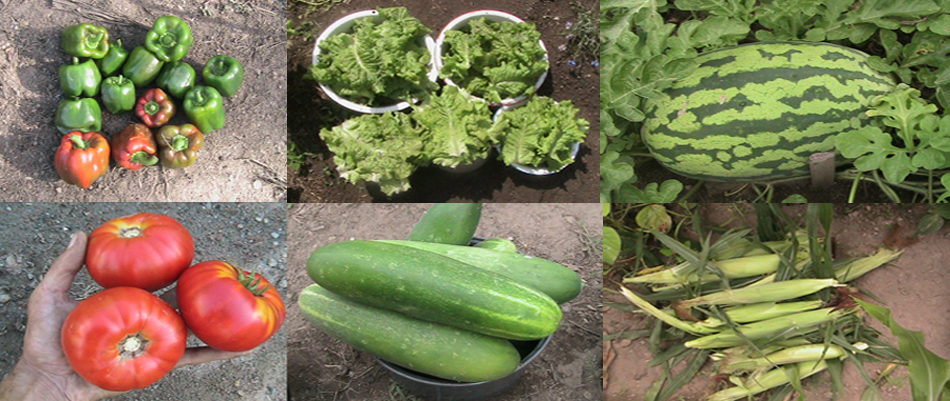
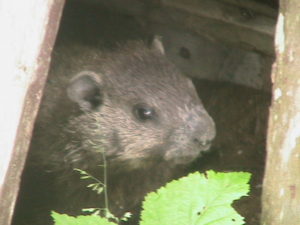
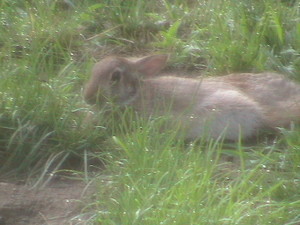
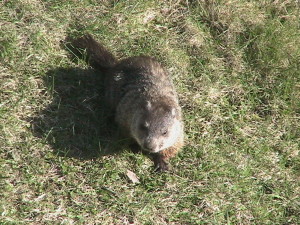
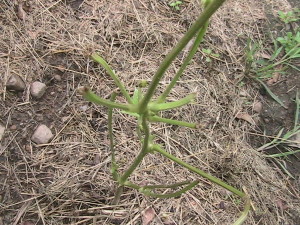
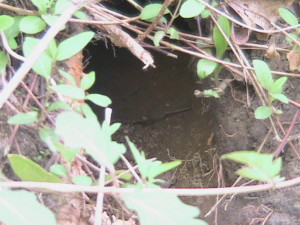
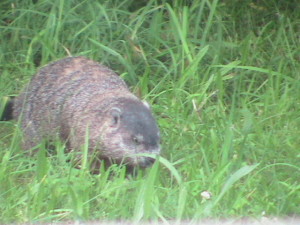
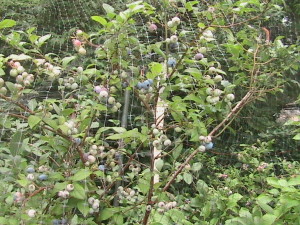
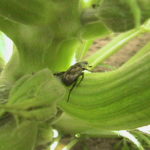
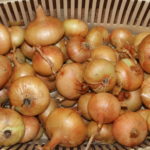
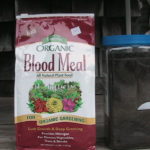
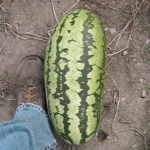

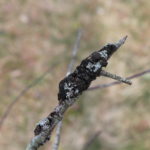
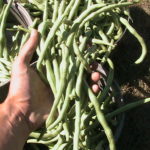
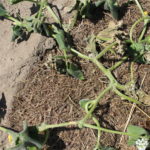
Recent Comments